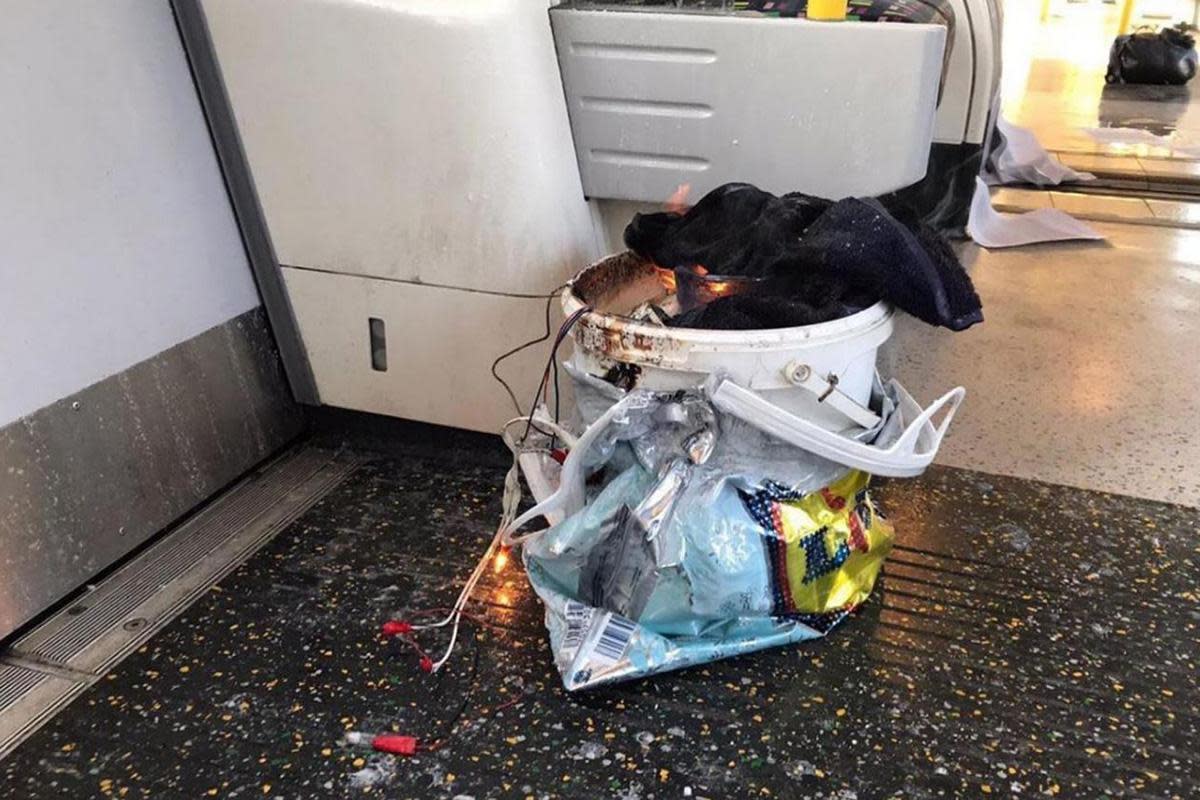As crude as the failed 'bucket bomb' may look, don’t write this attacker off as an amateur

We’re in the very early stages of the Parsons Green ‘bucket bomb’ investigation, and due to the failure of this device to explode fully - the world has been able to see just how rudimentary and makeshift in appearance it is.
Due to its crude appearance, and even perhaps because it’s in a budget supermarket carrier bag, many people have assumed it’s the work of an amateur who should be dismissed as just some sort of "crank".
Yet if you were privy to what we’ve seen in counter-terror investigations over the past fifteen years, you’d understand just how primitive and basic many of the most devastating improvised explosive devices (IEDs) have been.
In 7/7 we saw IEDs which used plastic containers and were packed in rucksacks. As these devices detonated successfully, the media and the public awarded the devices and the attackers way more credibility.
This time around, I’m hearing and reading that we shouldn’t take this attack seriously.
For me, there are a number of aspects which should be cause for concern.
The construction of this particular device is very similar to the sort of things we’ve seen before. All explosive devices have an initiator, detonator and a main charge.
Each of those parts has to work in the right order at the right time in order for a large explosion to take place. Initiation in most of the IEDs we see in mainland Europe and in the UK is now done with a simple electronic charge being sent to the detonator. Once the detonator explodes, it is supposed to set off an explosion of the main charge. All successful explosions have this effective chain reaction.
What we saw in 21/7, and what we’ve seen at Parsons Green, is evidence that the devices haven’t been tested properly, possibly because the attacker lives in a built up area and has not been able to gain access to a remote site where they could test out their handiwork.
If we go back to the 7/7 bombers, they tested their hydrogen-peroxide-based explosive devices out in the wilds of Ribblesdale. If we look at the Manchester Arena attack, Salman Abedi tested his devices abroad in Libya and elsewhere. However, when we investigated the failed 21/7 bombings, we couldn’t find any instance of them testing their devices outdoors anywhere.
That doesn’t mean these people are amateurs, it means it’s someone who hasn’t been able to perfect their device. This might have been an operational decision to avoid the possibility of being caught by police and security services before they could carry out their act of terrorism.
This is the first time we’ve seen a timing device on the UK mainland since the late nineties and early noughties. David Copeland, the convicted British Neo-Nazi bomber used a timing device on his nail bombs. The only other group to use timing devices were the IRA.
Neither of those would be dismissed as amateurs. To my mind, we really need to move with caution. This isn’t a novice. This person has researched what they’re doing and possibly been taught by someone else. They have also been able to collect all the component parts of an explosive device, assemble it, and deliver it to its target without detection by police and Security services.
The device at Parsons Green has been placed in a supermarket cool bag, possibly to keep it at a low temperature and its contents stable. Again this is similar to the 7/7 bombers who bought large bags of pre-made ice to pack around their devices to ensure they stayed cool and didn’t detonate prematurely.
Looking at photographs of the blast, there doesn’t appear to be any splashing of a liquid or substance around where the device went off. There is also very limited burning of fabrics and plastics. This likely means that the detonator was gas-based. And the only people who have used gas-based bombs previously are terror groups, particularly those from the Middle East.
Millions of commuters use the Tube every day. It rests upon all of us to be vigilant. If we see an unattended bag, ask whose it is. If we see someone leaving a bag somewhere, we need to challenge them. If someone won’t respond or responds suspiciously, report them - and if needs be, move people away from the area as quickly as possible. At the end of the day, you are your own health and safety officer.
But for goodness sake – don’t judge the bomb maker’s ability and the lethality of his or her device on its appearance or what type of bag it’s in.
David Videcette is a former counter-terror investigator with Scotland Yard who hunted down a bomb factory in the 7/7 London bombings investigation. He is the author of The Theseus Paradox which explores the motives behind 7/7, and The Detriment, which uncovers the reason behind the 2007 attacks on Glasgow airport. Sales of his books support the charitable work of the Police Dependants’ Trust.
